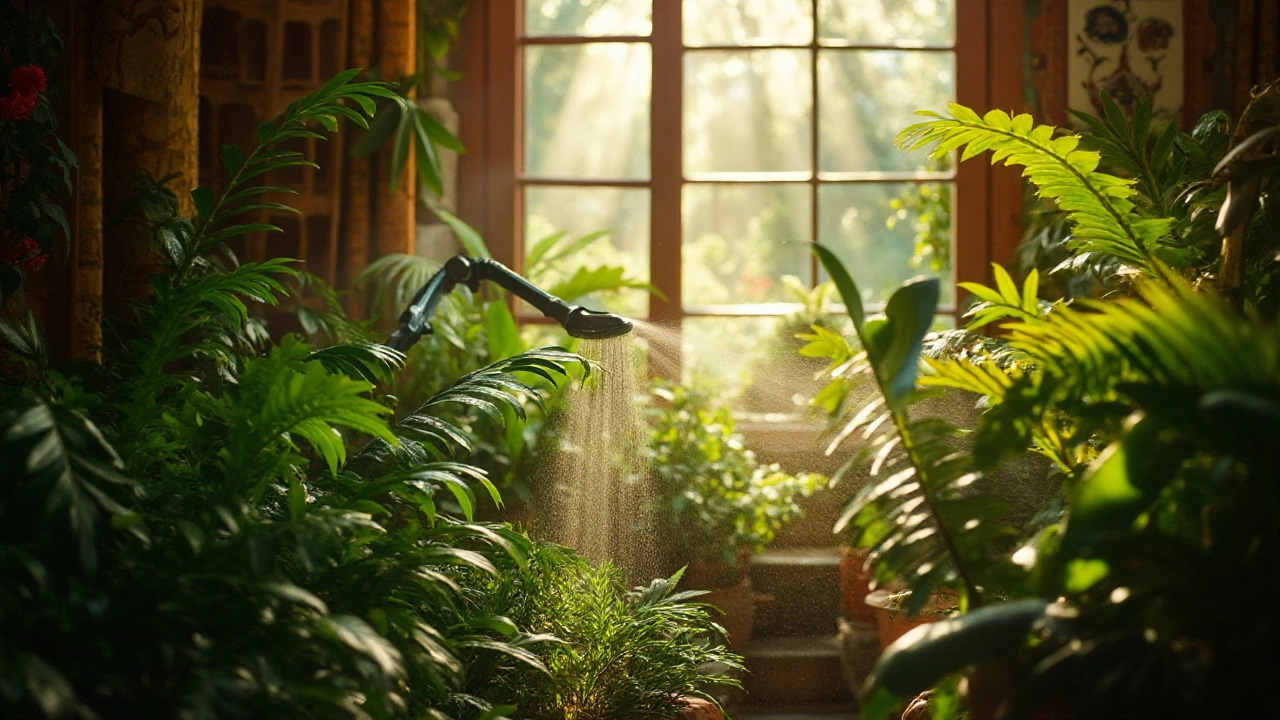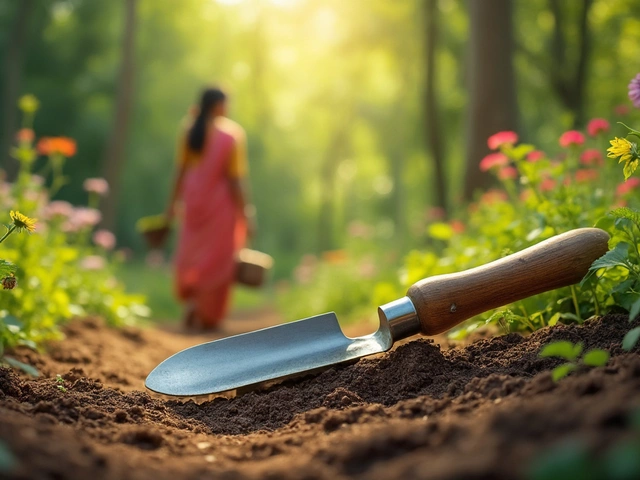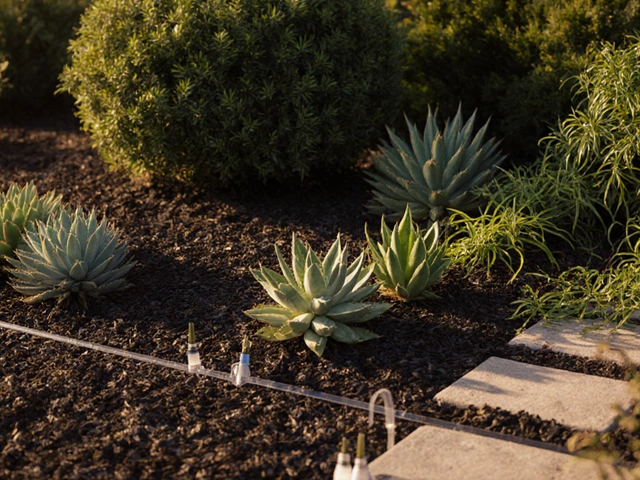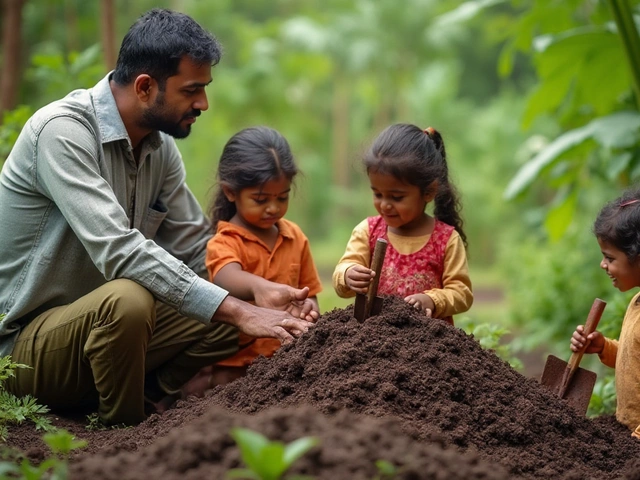Indoor plant care is a fascinating blend of art and science. For those keen on making their indoor garden a haven of lush and lively plants, understanding the role of humidity can't be overstated. Some plants, particularly those from tropical origins, thrive in moist conditions that mimic their natural habitats. That's where misting comes in. It's a simple practice that can lead to dramatic transformations in the health and vitality of certain houseplants.
Yet, not all plants are created alike when it comes to misting. Identifying which of your leafy companions prefer a gentle spritz is crucial. In this discussion, we'll delve into plant types that benefit from this practice, the right way to mist, and avoidable blunders that could inadvertently harm your plants. With these insights, even novice plant parents can nurture their green companions to their fullest potential.
- Why Misting Matters
- Plants That Benefit from Misting
- Misting Techniques and Tips
- Common Mistakes to Avoid
Why Misting Matters
Misting your indoor plants is akin to providing a refreshing drink on a hot summer's day. This simple act can work wonders for certain plants, particularly those hailing from tropical regions where humidity levels are naturally high. In many households, the air can become quite dry, especially during the winter months when heating systems are in full swing. This lack of moisture can take a toll on plants adapted to humid environments, leading them to develop brown leaf tips or become stunted. More than just a temporary solution, misting helps maintain a microclimate that supports healthy plant development and vitality.
One of the main benefits of misting is its ability to boost humidity around the plant's immediate environment. Unlike watering, which soaks the soil and roots, misting directly addresses the leaves, where many tropical plants absorb moisture from the air. A happy plant with misted leaves often displays vibrant colors and robust growth. It's a tool that can help bridge the gap between an arid home environment and the lush, humid worlds these plants are accustomed to. Herein lies its significance — misting can mean the difference between mere survival and thriving for many indoor plants.
The Science Behind Misting
Let's dive a bit into the science of it. Through a process called transpiration, plants release water from their leaves into the air. In return, they absorb moisture present in their surroundings. This evaporation creates a cooling effect and aids in nutrient uptake. Misting mimics the mist or dew that plants would naturally encounter in tropical jungles. Researchers have found that an atmosphere with adequate humidity can enhance photosynthesis, leading to healthier, faster-growing plants.
Particularly with indoor varieties like orchids, ferns, and mosses, misting is not just beneficial but essential. These plants tend to have sensitive leaves that, if they dry out, can delay growth and reduce their vibrancy. A regular misting schedule helps these darlings retain more of the environmental conditions they've evolved to love. It can also reduce the prevalence of certain pests, as some insects are less likely to infest plants in environments with high humidity. For instance, spider mites, notorious for attacking plants in dry conditions, are often deterred by consistent humidity levels.
"The right level of humidity is crucial not only for plant care but also for their disease resistance and overall health," remarks Dr. Diane Myers, a veteran botanist known for her extensive studies on plant habitats.
Interestingly, certain indoor spaces like kitchens and bathrooms naturally have higher humidity levels, making them ideal for placement of mist-loving plants. Thus, understanding the behavior of your home's moisture levels can further complement your misting routine, ensuring that you’re creating the best possible environment for your leafy companions.

Plants That Benefit from Misting
For many indoor plants, misting can be the secret ingredient that transforms their growth journey. This technique is particularly effective for species accustomed to the high humidity levels of rainforests. The constant moisture in these environments supports not only their water intake through roots but also nourishes them through their leaves. One notable group is the family of ferns. Ferns are known for their delicate fronds, which can dry out in arid conditions. A careful misting regime helps maintain their lush appearance, mimicking the plant's native environment. Additionally, epiphytes like certain orchids and air plants (Tillandsia) absorb moisture through their leaves, making misting not just beneficial, but essential.
Beyond these, there are other popular houseplants like the stunning peace lily and the adaptable spider plant that naturally thrive in slightly humid environments. Another example is tropical plants such as philodendrons and monstera, which show remarkable resilience with regular misting. The mist settles on the leaves and within the plant’s surroundings, elevating humidity and deterring the dry air that many homes experience, especially during winter months. It’s not just about hydration either—misting keeps pests away by washing off any dust or small insects effectively.
Just as not all plants require misting, not all plants should be misted excessively. Succulents and cacti, for example, thrive in drier environments and might suffer from root rot if subjected to too much moisture. Instead, these plants might need a different care regimen that respects their arid heritage. As a respected botanist once said,
"Understanding the origin of your plant can be the difference between flourishing greenery and wilted leaves. It's not simply about adding water, but about creating the right environment."This approach underscores the artful balance of nurturing plants.
For the best results in misting, the right tools make all the difference. Utilitize a fine spray bottle, ideally one that emits a gentle mist, to avoid water spots or damage on sensitive leaves. Early mornings are perfect for this practice. The leaves dry off as the day progresses, reducing the chance of mold or mildew development—a common issue when misting in the later hours when temperatures drop.
Here’s a list of indoor plants you might consider misting:
- Ferns
- Orchids
- Peace lilies
- Spider plants
- Philodendrons
- Monstera
By understanding these nuances and recognizing the specific needs of your indoor plants, you are not just watering them, you're breathing new life into them. Just a simple act like misting can open the door to a thriving, lively home environment that resonates with the verdant echoes of nature itself.
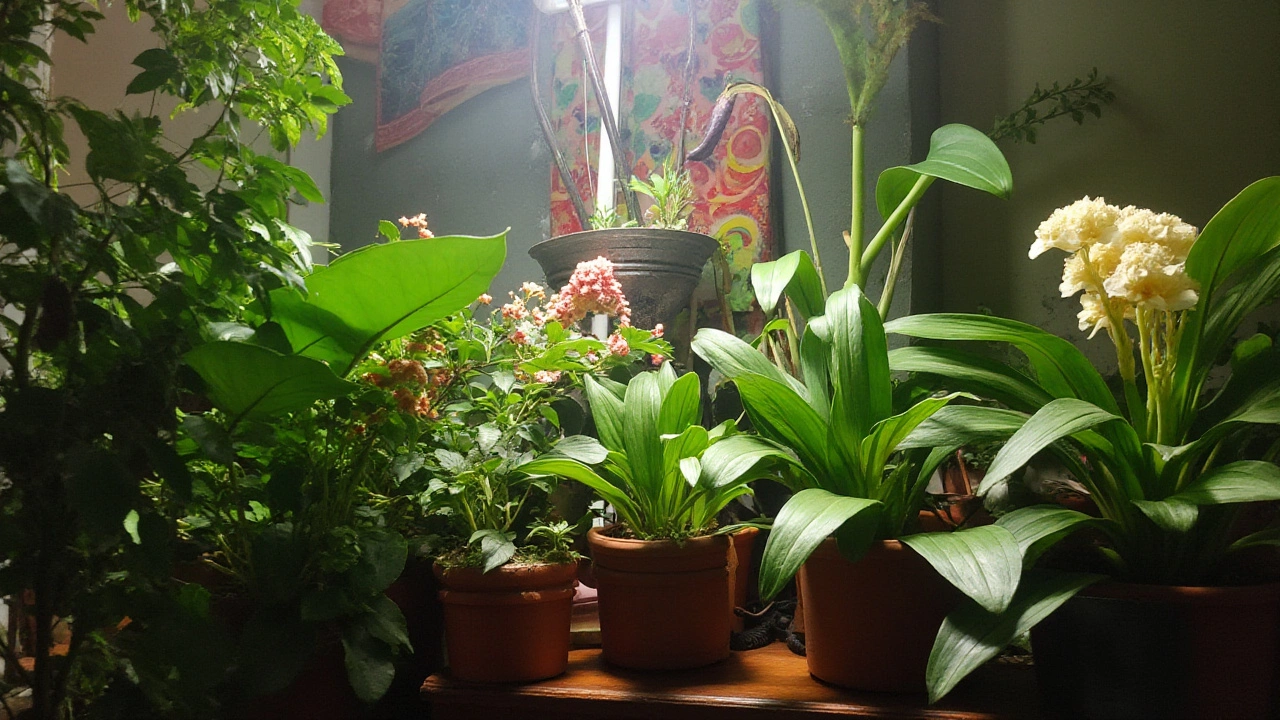
Misting Techniques and Tips
Misting can be an art unto itself, especially when trying to perfect the climate for your indoor plants. When done correctly, it simulates the natural environment these plants are accustomed to, helping your greenery truly thrive in its comforting embrace. A key to achieving this is using the right type of water. Tap water may contain minerals that could leave spots on leaves, so it's ideal to use distilled or rainwater for misting. This helps keep the foliage free from unwanted residue, allowing the leaves to shine in their natural glory. Understanding the needs of your plants is paramount, as misting too frequently might result in mold or diseases due to overly damp conditions. It’s a delicate balance of ensuring your plants get enough moisture to keep them happy and healthy.
Consider the tools of the trade as well. A fine-mist spray bottle is often recommended, as it distributes water evenly over the foliage without causing puddles or too much water buildup on the leaves. It's not just about the leaves, though; the ambient humidity levels of your home should also be considered, especially during the winter months when indoor heating can significantly dry the air. In such scenarios, misting can help maintain a beneficial microenvironment for your misting plants. There's also the technique of clustering plants together, which increases local humidity as the plants help each other maintain moisture levels, a great trick for plant parents working with limited resources.
Timing and Frequency
Misting is not only about doing it right, but also knowing when. Typically, early morning is the best time to mist your plants. This allows the moisture to dry throughout the day and reduces the risk of fungal diseases that thrive in moist, dark conditions. The frequency of misting depends upon the plant species and home humidity levels. Tropical foliage like ferns, orchids, and philodendrons often demand frequent misting, while plants such as succulents and cacti prefer dry conditions. Always ensure that you observe your plant closely to adjust the misting schedule as needed.
According to gardening expert Anna Cutter, "Listening to your plants is a skill that any great gardener must develop—plants, with their subtle signs, tell you what they need".
Additional aids like a humidity tray or humidifier can further bolster efforts to create a humid oasis. Humidity trays are essentially shallow dishes filled with water and pebbles, upon which your pots can sit without getting their roots wet. As the water evaporates, it creates a desirable mist. However, always be cautious not to overdo it, as too much moisture can lead to the very dreaded root rot. Technology such as hygrometers can also assist plant caregivers in monitoring home humidity levels, giving valuable insight into when and how often misting should occur. As such, precise attention to care routines ensures plants that are well misted and well monitored become a showcase of health and vibrancy.

Common Mistakes to Avoid
Misting your indoor plants can be a game-changer in creating a verdant oasis within your home, but it’s easy to slip into bad habits that can do more harm than good. One common mistake is misting too frequently. While certain plants love humidity, oversaturating their leaves can lead to fungus, mold, and other moisture-related issues. The key is finding a balanced routine that offers just enough moisture without soaking the plant entirely. Overly wet leaves can become a breeding ground for pests too, which is why moderation remains essential.
Another error often encountered is using hard water on the leaves. The minerals and chemicals found in tap water can leave residue and potentially burn the leaf tissue over time. Opting for distilled water or rainwater can prevent this issue, ensuring that you're not inadvertently damaging your beloved plants. It's an often overlooked detail, yet crucial for maintaining healthy foliage lustre.
A misconception with misting is that it completely replaces watering or other humidity-enhancing practices. Misting should complement, not substitute, these integral parts of your plant's care routine. Combine misting with a humidifier or a pebble tray to consistently bolster the moisture levels. It’s the synergy of these methods that can really make your plants thrive. As horticulturist Jane Doe explains,
“Misting is a fine art that, when done correctly, mimics nature’s subtle touch, offering just enough tenderness without overwhelming.”
Some plant enthusiasts make the blunder of misting at the wrong time of day. The psychological approach says the early morning suits best because it aligns with when plants naturally get dew in their habitats. Evening misting without ample airflow can lead to moisture lingering too long, which promotes disease. Timing is a vital component in your misting strategy, and adapting this can demonstrate remarkable changes in plant health.
Lastly, ignoring the different needs of various plants can lead to a world of trouble. Each plant species comes with its own set of misting preferences, and understanding these distinct nuances is a mark of a seasoned indoor gardener. Cacti, for example, don't crave the same humidity levels as a Boston fern. By tailoring your approach to each plant type, you'll not only keep them alive but help them flourish, embodying the vibrant splendor they possess in nature.
